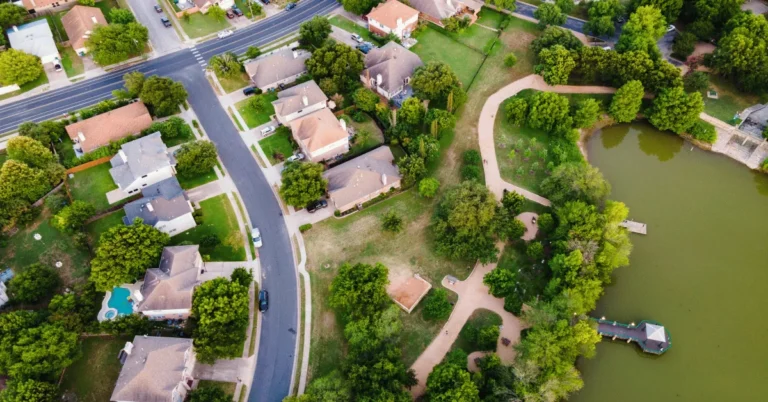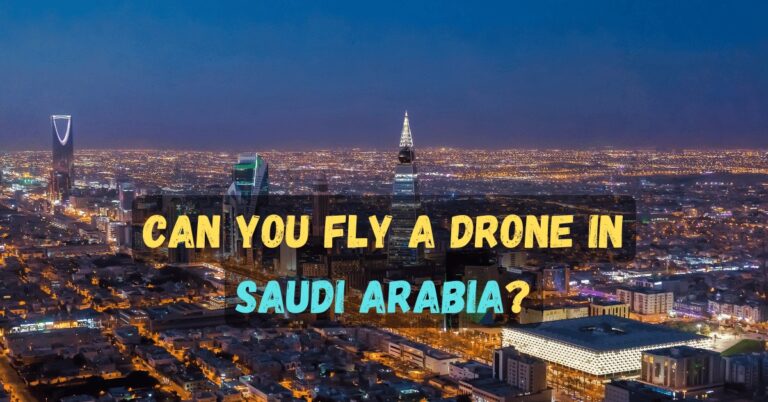Can You Fly a Drone in Class B Airspace? (Rules, Risks, and Regulations Explained)
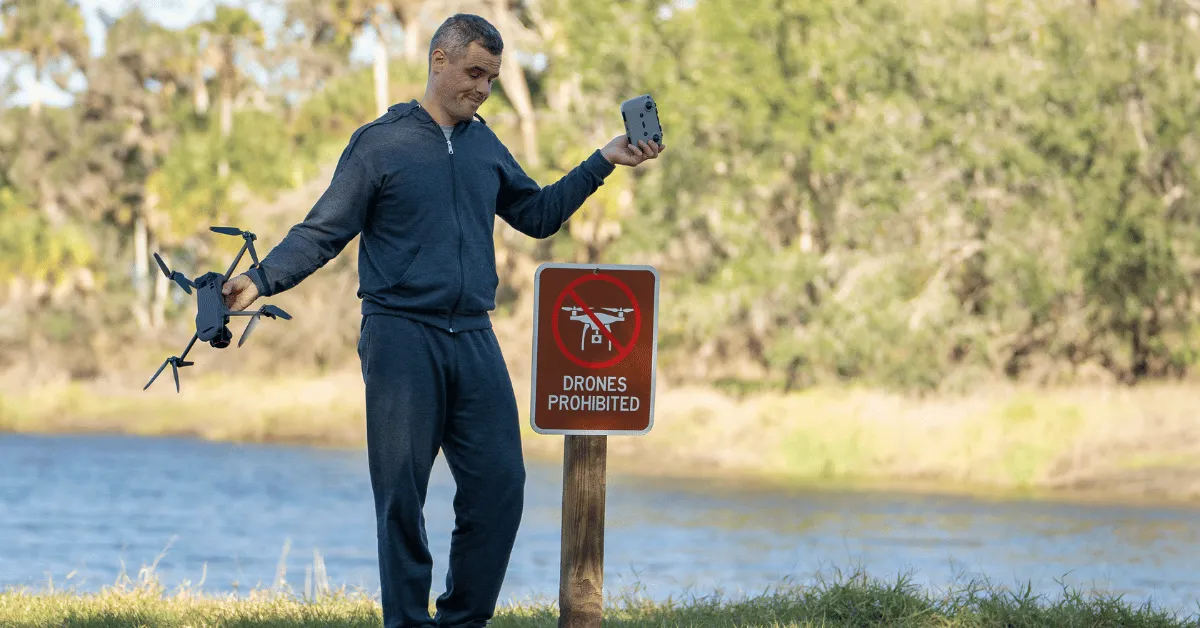
No, you cannot fly a drone in Class B airspace without prior authorization from air traffic control.
Class B airspace is the most restricted airspace type, and is typically located around major airports. Drones pose a safety risk to commercial aircraft, so they are not permitted to fly in Class B airspace without special permission.
Well, if you want to know how to get authorization from air traffic control then you should keep reading this article because I am going to solve this query today.
Key Takeaways
- Class B Airspace: Class B airspace is highly restricted and requires prior authorization from air traffic control (ATC) for drone operation due to its proximity to major airports.
- Safety Risks: Drones in Class B airspace pose risks to manned aircraft, interfering with radar signals and potentially causing collisions, leading to serious injuries and property damage.
- Authorization Process: To fly a drone in Class B airspace, obtain authorization via the FAA’s Low Altitude Authorization and Notification Capability (LAANC) system or the FAA Drone Zone website.
- Communication with ATC: Maintain two-way communication with ATC before, during, and after drone flights in Class B airspace, ensuring safety and coordination.
- Mitigating Risks: Prioritize safety by adhering to altitude limits, avoiding crowded areas, being aware of weather conditions, and using drones equipped with collision avoidance systems.
- Commercial Impact: Commercial air traffic near Class B airspace can lead to collisions, disruption of airport operations, and security risks, making adherence to airspace regulations crucial for drone operators.
Can you fly a drone in class B airspace? (Detailed)
Class B airspace is the most restricted airspace in the United States. It is located around major airports and has a radius of 5 nautical miles. to fly a drone in Class B airspace, you must have prior authorization from air traffic control.
What is Class B airspace?
Class b airspace is defined as airspace from the surface to 10,000 feet above mean sea level (MSL) surrounding an airport with an operational control tower.
It is typically shaped like an upside-down wedding cake, with the lowest altitude at the airport and the highest altitude at the outer edge of the airspace.
Can you fly a drone in Class B airspace?
Generally, no, you cannot fly a drone in Class B airspace without prior authorization from ATC. There are a few exceptions to these rules, such as if you are flying for law enforcement or government purposes.
Why drones are not allowed in Class B airspace?
Well, there are several reasons why Class B airspace is so restricted. First, it is the airspace closest to major airports, where there is a lot of air traffic. Drones could pose a safety hazard to manned aircraft if they were to collide with them.

Second, drones can interfere with the radar signals that ATC uses to track aircraft. This could make it difficult for ATC to keep aircraft safe.
Third, drones can be used for malicious purposes, such as dropping objects on aircraft or people.
What are the penalties for flying a drone in Class B airspace?
The penalties for flying a drone in Class Be airspace without authorization can be severe. You could be fined up to $25,000, imprisoned for up to three years, or both. You could also have your drone confiscated.
Now let me tell you the solution.
The best way to avoid flying a drone in Class B airspace is to use a drone flight planning app. These apps will show you which areas of airspace are restricted and which areas are allowed. You can also check the FAA website for a list of all restricted airspace areas.
How can you know where Class B airspace is?
If you are flying a plane or drone, it is important to know where Class B airspace is so that you can avoid flying in it without permission.
Different ways to know where Class B airspace is
There are a few ways to know where Class B airspace is. One way is to look at a sectional chart. Sectional charts are maps that show airspace, terrain, and other features of the National Airspace System (NAS).
Class B airspace is shown on sectional charts as a blue circle or area with a number and letter designation. The number represents the floor of the airspace in hundreds of feet above sea level (MSL), and the letter represents the ceiling of the airspace in hundreds of feet MSL.
For example, a Class B airspace with the designation “90/20” means that the floor is 9,000 feet MSL and the ceiling is 20,000 feet MSL.

Another way to know where Class B airspace is to use an online flight planning tool. There are many different flight planning tools available, such as ForeFlight, Garmin Pilot, and AirNav.
These tools allow you to enter your current location and destination, and they will show you all of the airspace that you will be flying through.
Finally, you can also ask ATC for help in finding Class B airspace. If you are flying a plane, you can contact ATC on the radio and ask them to provide you with clearance to fly in or around Class B airspace.
So if you know where Class B airspace is, you can help to ensure that you fly safely and avoid getting into trouble with ATC.
Quick and Effective Big Tip
“Fly Smart, Stay Safe! Before operating your drone in Class B airspace, always secureprior authorization from air traffic control. This simple step ensures safety for all aircraft and helps you avoid penalties. Remember, responsible flying is key to a successful and risk-free drone adventure.”
Sulman Khan
What is the significance of Class B airspace in terms of drone operation and aviation safety?
Class B airspace is the most restricted airspace in the United States. It is located around the busiest airports and extends from the surface to 10,000 feet above mean sea level. All aircraft, including drones, must have prior authorization from air traffic control(ATC) to operate in Class B airspace.
Now let’s talk about the significance of drone operations.
The significance of class B airspace for drone operation is that it is strictly prohibited for recreational drone pilots. This is because of the high volume of air traffic in class B airspace, which poses a significant safety risk to drones.
Commercial drone operators may apply for authorization to fly in class B airspace, but this is typically only granted for operations that are essential to public safety or national security.
Now let me tell you the significance of aviation safety.

Class B airspace is also significant for aviation safety. The strict regulations governing operations in Class B airspace help to prevent mid-air collisions and other accidents.
By requiring all aircraft to have prior authorization from ATC, Class B airspace helps to ensure that the airspace is managed safely and efficiently.
How does operating a drone in Class B airspace differ from flying in other airspace classes?
Class B airspace is the most restrictive airspace in the United States. It is located around major airports and has a radius of 5 nautical miles. To fly a drone in Class B airspace, you must have prior authorization from air traffic control (ATC).
It is so much important to tell you that’s why I am repeating it again and again.
Okay, now let’s come to the point, and let me tell you the key differences between operating a drone in Class Be airspace and flying in other airspace classes.
First of all, let’s talk about the altitude restrictions. The maximum altitude for drone flying Class B airspace is 400 feet above ground level (AGL).
Now let’s talk about the distance from airports. You must stay at least 5 nautical miles away from the center of any Class B airspace. In other airspace classes, the required distance from airports varies.
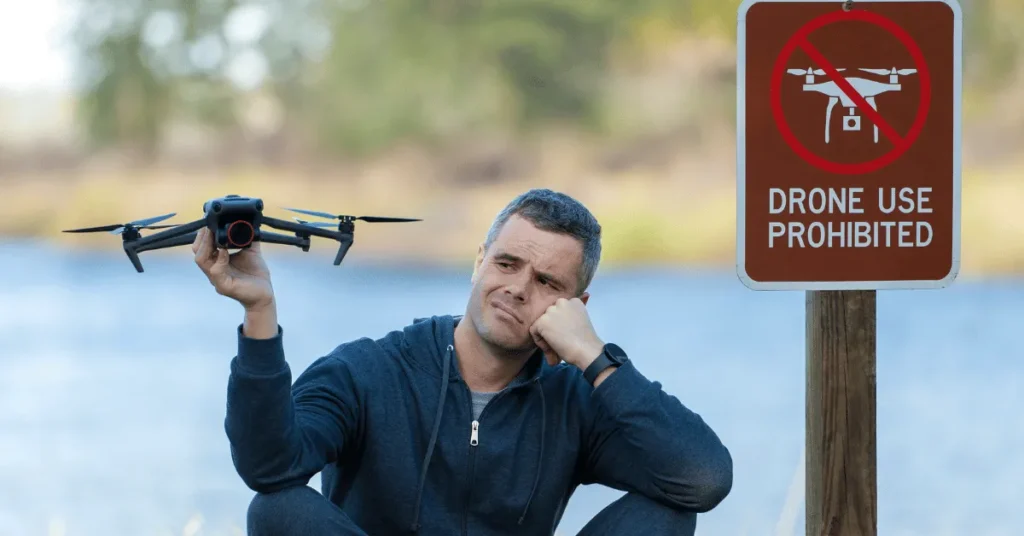
If you want to fly your drone in Class B airspace then communication with ATC is very important. You must establish two-way communication with ATC before, during, and after your drone flight in Class airspace. In other airspace classes, communication with ATC is not always required.
After knowing this much you should know about waivers and authorizations. You may need to obtain a waiver or authorization from the FAA to fly a drone in Class B airspace. This is not typically required for other airspace classes.
If you want to fly your drone in Class B airspace then it is important to follow all drone flying regulations when operating a drone in Class B airspace. Violating these regulations can result in fines and other penalties.
What are the potential safety risks associated with flying drones in Class B airspace?
As you know the Class B airspace is the most heavily controlled in the United States. So, there are several potential safety risks associated with flying drones in Class B airspace.
Now let’s come to the point.
Drones can pose a serious safety risk to manned aircraft. A collision between a drone and an aircraft could result in serious injury or death.
Now, one of the bigger safety risks is a distraction to pilots. A pilot who is distracted by a drone could lose control of their aircraft, leading to a crash.
You know, privacy is very important for everybody and I am 100% sure that you also love your privacy. Now the thing is, drones can be used to invade people’s privacy. For example, a drone could be used to spy on someone’s home or business.
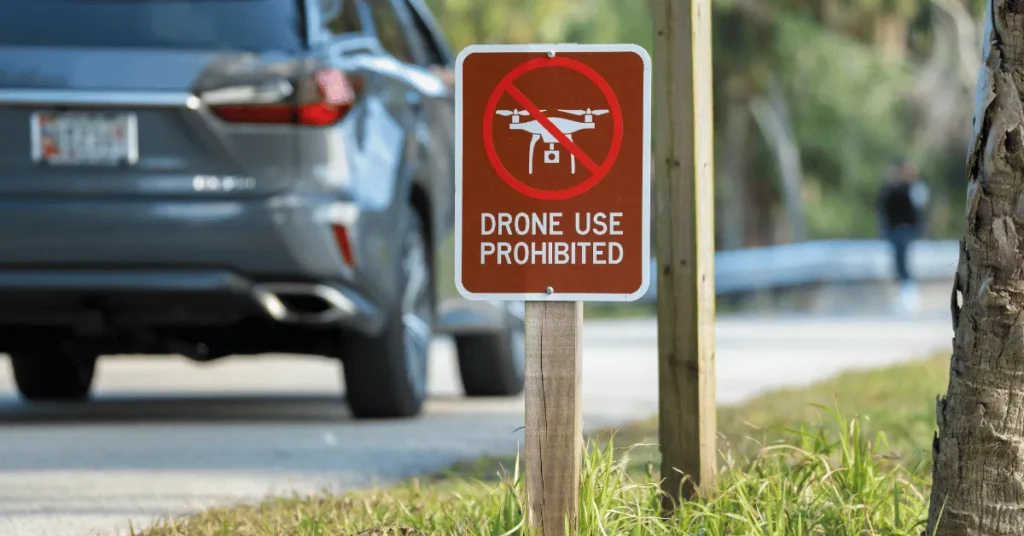
It is also possible that drones can cause property damage. For example, a drone could crash into a building or vehicle, causing damage.
If there are some problems then there are also there answers or solutions. So let’s talk about how you can mitigate the safety risks of flying drones in Class B airspace.
How can you mitigate the safety risks of flying drones in Class B airspace?
There are several things you can do to mitigate the safety risks of flying drones in Class B airspace.
Let me tell you some of them.
- Before flying your drone you should get prior authorization from ATC.
- You should fly your drone at a safe altitude, typically no higher than 400 feet AGL.
- You should be aware of other aircraft and stay clear of their flight paths.
- You should avoid flying in areas where there is a lot of air traffic.
- You should be aware of the weather conditions and avoid flying in bad weather.
- You should use a drone that is equipped with a collision avoidance system.
If you follow these tips, you can help to ensure a safe and responsible drone flying experience in Class B airspace.
What regulations and permissions are typically required for flying drones within Class B airspace?
Following the drone laws is so much important because they can save lives. When it comes to operating drones within class B airspace, there are specific regulations and permissions that drone enthusiasts and pilots need to be well-versed in.
Class B airspace is typically found around major airports and densely populated urban areas, making it crucial to ensure safe and responsible drone operations.

In this section, I will delve into the key regulations and permissions that are typically required for flying drones within Class B airspace.
Let’s understand the regulations for flying drones in Class B airspace.
Regulations for flying drones in Class B airspace
So first of all you should obtain FAA Part 107 certification. One of the primary requirements for operating a drone in Class B airspace is obtaining an FAA Part 107 Remote Pilot Certificate.
This certification demonstrates your knowledge of airspace regulations, safety protocols, and operational guidelines.
Flying a drone in Class B airspace often required direct communication with air traffic control (ATC). Pilots must establish contact and follow instructions provided by ATC to ensure safe separation from manned aircraft.
You know what, in many cases, drone operators need to obtain prior authorization from the FAA or the airport’s air traffic control tower before flying in Class B airspace. This helps coordinate drone flights with ongoing air traffic and enhances overall safety.
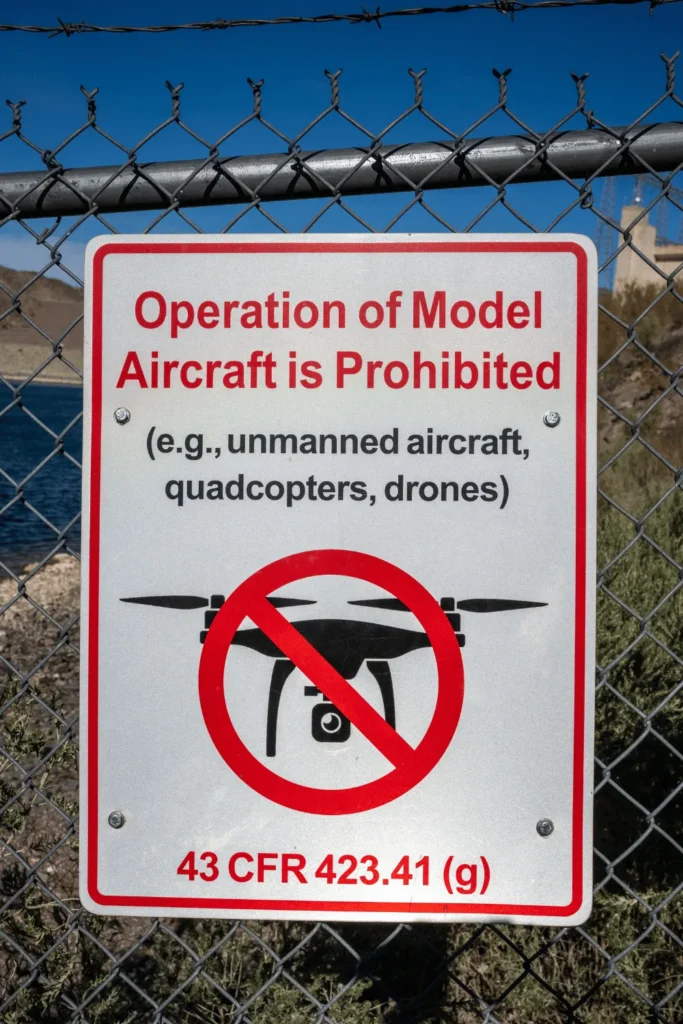
There are altitude restrictions within class B airspace that drone operators must adhere to. These restrictions are put in place to prevent conflicts with manned aircraft. Be sure to research and understand the maximum allowable altitude for drone operations in your specific Class B airspace.
Now let’s know about permissions and procedures.
Permissions and procedures
Some regions require drone pilots to file flight plans detailing their intended route, altitude, and duration of flight. This information aids ATC in managing airspace and reducing potential conflicts.
Drone operators should be aware of emergency procedures when flying in Class B airspace. This includes giving way to manned aircraft and immediately following instructions from air traffic control if a conflict arises. It is very important for you and I also would highly recommend you.
The last and most important thing is monitoring NOTAMs. Keeping an eye on notices to airmen (NOTAMs) is essential. These notices provide updates on temporary flight restrictions, special events, or other factors that may impact drone operations within Class B airspace.
How might the presence of commercial air traffic impact the ability to fly a drone in Class B airspace?
As you know Class B airspace is a type of airspace that surrounds major airports and is controlled by air traffic control (ATC). Drones are not allowed to fly in Class B airspace without prior authorization from ATC.
The presence of commercial air traffic can impact the ability to fly a drone in Class B airspace in several ways
It is possible that drones can be a hazard to commercial aircraft. Drones can be mistaken for other aircraft by pilots, and they can also interfere with the radar and radio systems used by aircraft. This can lead to mid-air collisions or other accidents.
It is also seen that drones can disrupt airport operations. Drones flying in the vicinity of an airport can interfere with the movement of aircraft and ground vehicles. This can delay or cancel flights, and it can also pose a safety hazard to airport personnel.

The bad part is drones can be used for malicious purposes. Drones can be used to carry explosives or other dangerous materials, or they can be used to spy on people or property. This can pose a security risk to airports and other critical infrastructure.
For these reasons, it is important to be aware of the potential impacts of commercial air traffic when flying a drone in Class Be airspace. Drone operators should always check airspace regulations before flying, and they should never fly their drones in restricted areas.
Can you explain the process of obtaining authorization to fly a drone in Class B airspace for commercial purposes?
Yes, it is very important to get authorization to fly a drone in Class B airspace for commercial purposes. So basically there are two ways to obtain authorization to fly a drone in Class B airspace.
Let me tell you they both.
The first of them is LAANC. LAANC stands for low altitude authorization and notification capability. It is a web-based system that allows drone pilots to request authorization to fly in controlled airspace. LAANC authorizations are typically granted within minutes.
the second way is Drone Zone. The FAA Drone Zone is a website where drone pilots can request airspace authorization for commercial operations. Drone Zone authorizations are typically processed within 24 hours.
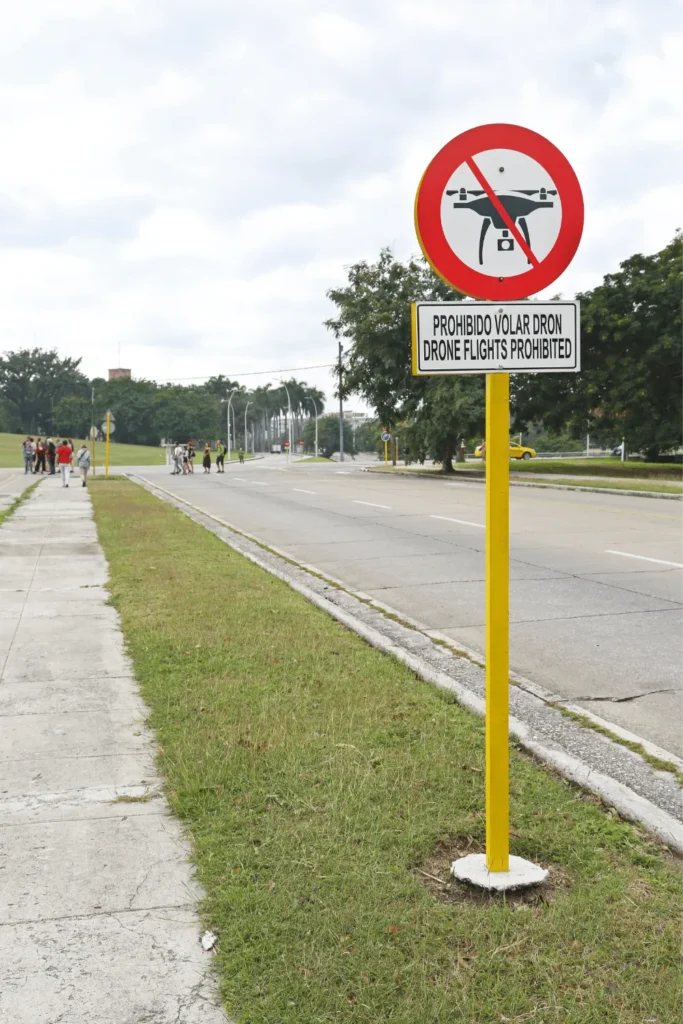
Now let’s understand the process.
To request authorization to fly a drone in Class Be airspace, you will need to provide the following information.
- Your name and contact information
- The make and model of your drone
- The date and time of your flight
- The location of your flight
- The maximum altitude of your flight
- The purpose of your flight
Once you have submitted your request, the FAA will review it and make a decision. If your request is approved, you will receive an authorization letter.
If you follow these guidelines that I have shared with you, you can safely and legally fly a drone in Class B airspace for commercial purposes.
Important FAQs
Can I fly my drone in Class B airspace without authorization?
How does Class B airspace differ from other airspace classes?
What are the potential safety risks of flying drones in Class B airspace?
How can I mitigate the safety risks of flying drones in Class B airspace?
What regulations and permissions are required for flying drones in Class B airspace?
How might the presence of commercial air traffic affect drone flights in Class B airspace?
Can you explain the process of obtaining authorization to fly a drone in Class B airspace for commercial purposes?
Can recreational drone pilots fly in Class B airspace?
Final Thoughts
Flying a drone in Class B airspace is strictly prohibited for recreational drone pilots. Commercial drone operators may apply for authorization to fly in Class B airspace, but this is typically only granted for operations that are essential to public safety or national security.
If you are interested in flying a drone in Class B airspace, you should first obtain a Remote Pilot Certificate from the FAA.
You will also need to research the specific regulations and permissions that apply to your location. Finally, you should always fly your drone safely and responsibly, following all applicable laws and regulations.
Want to Watch a video?
Images by: Canva.com
Can You Fly a Drone in Class E Airspace? (Everything You Need to Know)
“Thinking of taking your drone to Class E airspace? 🌤️ Find out all you need to know in our quick article. Don’t get grounded – read it now!”





